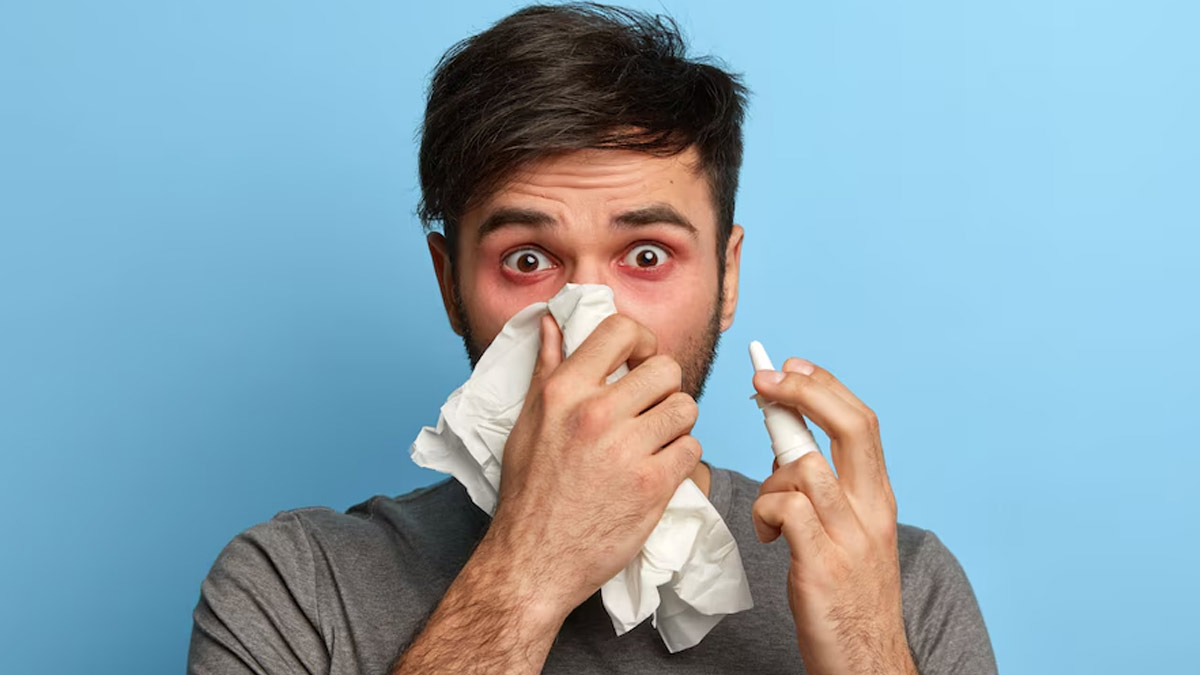
If you're someone who has experienced an itchy roof of the mouth, even for a few minutes, you're not alone. Many people, either after eating a certain food or as a result of an allergy, develop this condition. Dr Joydeep Ghosh, Consultant, Internal Medicine, Fortis Hospital, Anandapur, describes the sensation as tingling and pin-pricking and shares that it often occurs due to health conditions like oral allergy syndrome, oral thrush, and fever blisters, caused either by allergic reactions or bacterial or viral infections.
Table of Content:-
Also Read: Spring Is Here And So Are Seasonal Allergies: Tips To Treat And Prevent Symptoms
Possible Causes Of Itchy Palate

Discussing the causes of an itchy palate, Dr Ghosh lists:
Allergy or allergic reactions
Being allergic to certain types of foods, medications, and other such things can lead to an itchy roof of the mouth. This is even more common in the event of anaphylaxis, a severe allergic condition that can sometimes be life-threatening. These allergies are often referred to as Oral Allergy Syndrome (OAS). According to the Allergy and Asthma Network, as many as one out of three people with seasonal allergies may experience OAS. Other symptoms include hives on the mouth, scratchy throat, and swelling of the lips, tongue, or throat.
Viral infection
Dr Ghosh says, “People also get itchy palates due to certain viruses like the herpes simplex virus, cold and fever-causing viruses, and the varicella-zoster virus (chickenpox), which can be highly contagious.”
Fungal infections
tchy palates are also caused by fungal infections like yeast infections. Such conditions are commonly called oral thrush. To identify the condition, watch out for the following symptoms:
- White or red patches inside your mouth
- Bumps that look like cottage cheese
- Cracking and redness at the corners of your mouth
- A cottony feeling in your mouth
- Loss of taste
Is It A Viral Infection?

Viral infections are illnesses that are caused by viruses that prompt the body's cells to make more copies of themselves. They can transmit through close contact, sexual and non-sexual, by being bitten by insects, or congenitally, by being passed by a pregnant person to the foetus.
In most cases, viral infections involve the nose, throat, and upper airways, or systems such as the nervous, gastrointestinal, and reproductive systems, according to the MSD Manual.
Also Read: Viral Versus Bacterial Infection: Why You Need To Know The Difference
In certain cases, different types of viral infections, including COVID-19, can cause the roof of the mouth to itch. This was also suggested in a study published on the JAMA Network. Researchers noted that some COVID-19 patients with skin rashes also had mouth lesions, particularly on the roof of their mouth. These lesions often appeared later than the skin rash and were sometimes just tiny red spots.
Interestingly, the presence of these mouth lesions seemed to be a strong indicator that the rash was caused by the virus itself and not a side effect of medication.
The most common way to identify and differentiate a viral infection from other factors is to pay attention to its distinct symptoms.
Dr Ghosh highlights that when a person is infected with a virus, he or she develops rashes or bumps gradually with a low fever, persistent sneezing, body aches, and sore throats. On the contrary, allergies and fungal infections usually do not tend to cause fever and body aches, he adds.
When To Visit A Doctor?

“It is always advisable to see a doctor when a person is experiencing persistent or prolonged itching, burning, or tingling sensations on the palate,” says Dr Ghosh. According to him, consulting a doctor can help identify the root cause of the problem and treat it accordingly.
In the event of anaphylaxis, the doctor recommends seeking immediate medical help.
Also watch this video
How we keep this article up to date:
We work with experts and keep a close eye on the latest in health and wellness. Whenever there is a new research or helpful information, we update our articles with accurate and useful advice.
Current Version